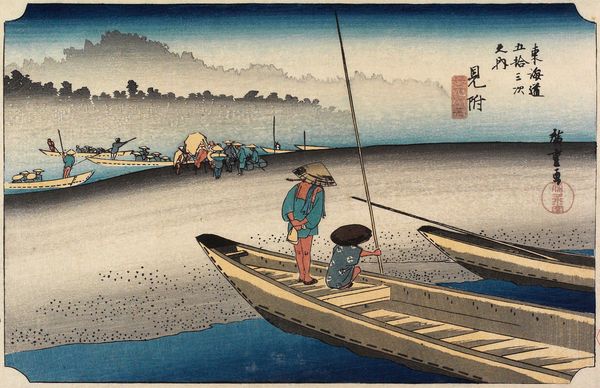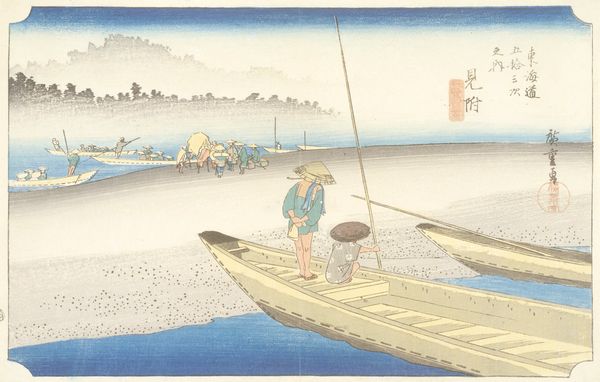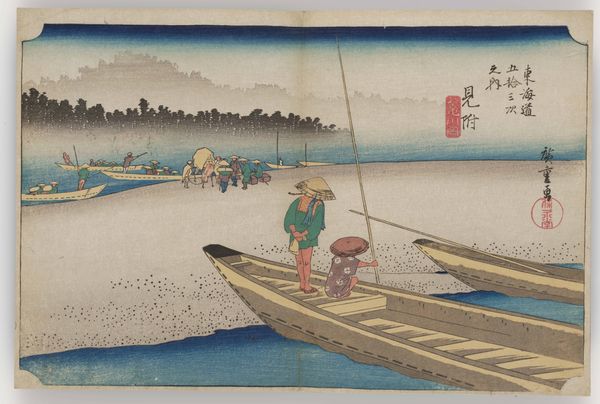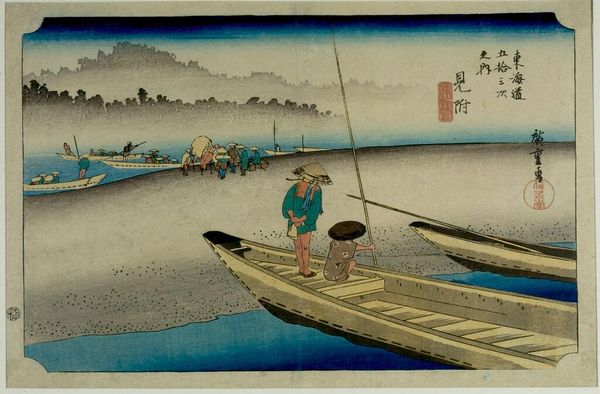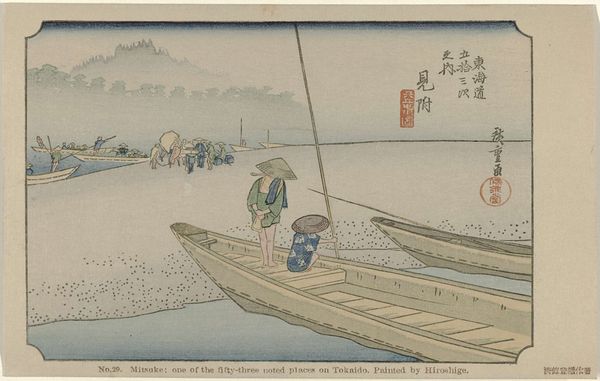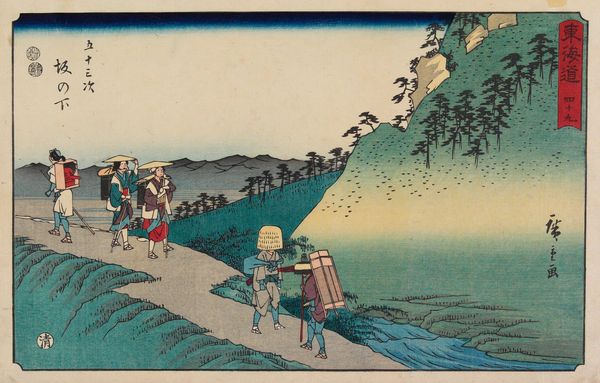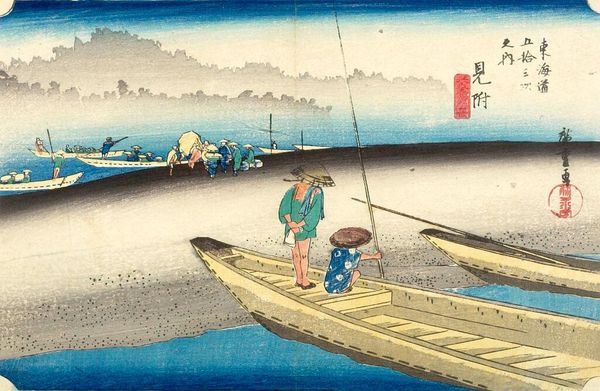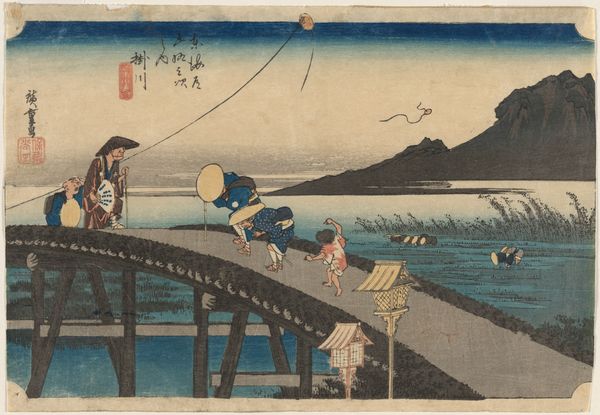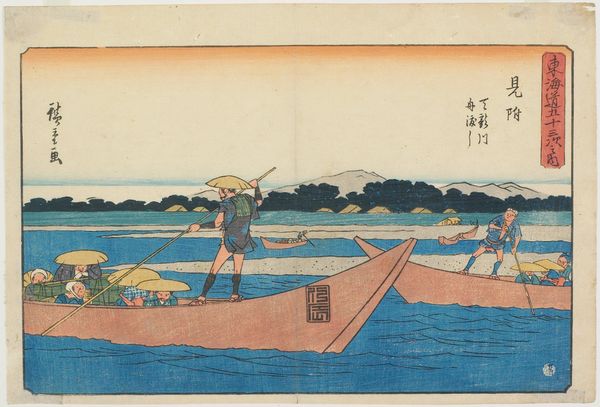
print, ink, woodblock-print
# print
#
landscape
#
ukiyo-e
#
japan
#
ink
#
woodblock-print
#
orientalism
#
genre-painting
Dimensions: 9 × 13 7/8 in. (22.8 × 35.2 cm) (image, sheet, horizontal ōban)
Copyright: Public Domain
Curator: Here we have Utagawa Hiroshige’s “Mitsuke-Tenryū River View,” a woodblock print created around 1832 or 1833, and part of his series *Fifty-three Stations of the Tōkaidō*. Editor: The composition immediately strikes me. It’s incredibly serene, yet there’s this strong diagonal created by the boats leading our eye across the vastness of the river. A sense of quiet industriousness. Curator: Yes, the composition guides our reading, but note the texture. The material roughness of the printmaking is deliberately unconcealed, enhancing our encounter with this river scene. It exemplifies *ukiyo-e*, the floating world genre, focusing on landscapes and daily life. Editor: And speaking to that roughness, the labor involved in creating these prints must have been substantial. The carving of the blocks, the application of inks, the repetitive pressing—all performed by skilled artisans. Look closely at the boats: such fine line work. Curator: The linear perspective employed offers a fascinating intersection of Eastern and Western visual traditions. The layering creates spatial depth and subtly indicates status with scale. It’s not strict, academic perspective but it nods to the European vogue. Editor: Precisely! And consider the materials themselves: the wood blocks sourced, the pigments derived from natural materials, all traded commodities that facilitated the circulation of both goods and imagery across Japan. Each print served almost as a small piece of portable landscape. Curator: It also makes visible certain structures: Hierarchies are revealed in the representation of people. Scale determines power within this plane; its pictorial grammar delineates the relationship between people and the river they cross, and people across that water. Editor: An insightful consideration. For me, knowing these were mass-produced, somewhat affordable objects intended for a burgeoning merchant class, brings the image down to earth and challenges conceptions of art history as purely elevated creative genius. It demonstrates how artistry can thrive in commodified spaces. Curator: Ultimately, Hiroshige achieved a remarkable synthesis of artistic expression and practical application. It invites both aesthetic appreciation and critical analysis of material practice and culture. Editor: Agreed. Hiroshige's genius lay in transforming everyday labor and landscape into enduring aesthetic statements, revealing a profound interconnection of materiality and lived experience.
Comments
No comments
Be the first to comment and join the conversation on the ultimate creative platform.
